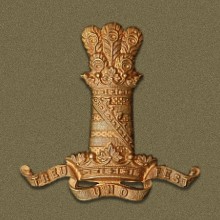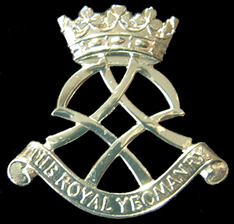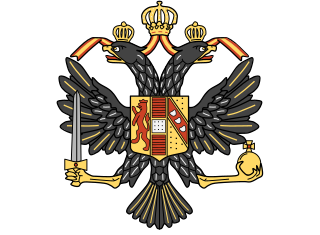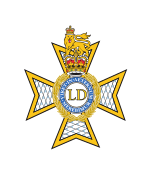
Dragoons were originally a class of mounted infantry, who used horses for mobility, but dismounted to fight on foot. From the early 17th century onward, dragoons were increasingly also employed as conventional cavalry and trained for combat with swords and firearms from horseback. While their use goes back to the late 16th century, dragoon regiments were established in most European armies during the 17th and early 18th centuries; they provided greater mobility than regular infantry but were far less expensive than cavalry.

The Royal Armoured Corps is the armoured arm of the British Army, that together with the Household Cavalry provides its armour capability, with vehicles such as the Challenger 2 and the Warrior tracked armoured vehicle. It includes most of the Army's armoured regiments, both the Royal Tank Regiment and those converted from old horse cavalry regiments. In September 2024, it comprised fourteen regiments: ten Regular Regiments; four Army Reserve. Although the Household Cavalry Regiment provide an armoured regiment, they are not part of the RAC.

The 11th Hussars (Prince Albert's Own) was a cavalry regiment of the British Army established in 1715. It saw service for three centuries including the First World War and Second World War but then amalgamated with the 10th Royal Hussars (Prince of Wales' Own) to form the Royal Hussars in 1969.

The Royal Scots Dragoon Guards (Carabiniers and Greys) is a cavalry regiment of the British Army, and the senior Scottish regiment. The regiment, through the Royal Scots Greys, is the oldest surviving Cavalry Regiment of the Line in the British Army. The regiment is based at Waterloo Lines, Leuchars Station, as part of 51st Infantry Brigade and Headquarters Scotland, a light adaptable force brigade.

The Royal Yeomanry (RY) is the senior reserve cavalry regiment of the British Army. Equipped with Supacat Jackal variants, their role is to conduct mounted and dismounted formation reconnaissance. The Regimental Headquarters is located in Leicester, with squadrons in Fulham, Nottingham, Dudley, Croydon, Telford, and Leicester. The regiment is part of the Royal Armoured Corps and is only reserve cavalry regiment to resubordinate into regular brigade as part of the Future Soldier Programme, which in turn arose from the Integrated Review of Security, Defence, Development and Foreign Policy published in March 2021.

The Queen's Own Yeomanry (QOY) is one of the Army Reserve light armoured reconnaissance regiments.

The Queen's Royal Hussars (The Queen's Own and Royal Irish) (QRH) is a British armoured regiment. It was formed on 1 September 1993 from the amalgamation of the Queen's Own Hussars and the Queen's Royal Irish Hussars. The regiment and its antecedents have been awarded 172 Battle Honours and eight Victoria Crosses. The regiment was based in Sennelager, Germany, until 2019 when it was relocated to Tidworth Camp, England. It is the armoured regiment for 20th Armoured Brigade Combat Team.

1st The Queen's Dragoon Guards (QDG) is a regiment in the Royal Armoured Corps of the British Army. Nicknamed The Welsh Cavalry, the regiment recruits from Wales and the bordering English counties of Cheshire, Herefordshire, and Shropshire, and is the senior cavalry regiment, and therefore senior regiment of the line of the British Army.

The 9th/12th Royal Lancers was a cavalry regiment of the British Army, formed in 1960 by the amalgamation of the 9th Queen's Royal Lancers and the 12th Royal Lancers. In the later years of its existence, the regiment served as a formation reconnaissance regiment, equipped with the Combat Vehicle Reconnaissance (Tracked) family of vehicles and was attached to the 7th Armoured Brigade, the Desert Rats. The regiment was based in South Wigston, Leicestershire, along with its affiliated Territorial Army unit, B Squadron, The Royal Yeomanry. It was amalgamated with the Queen's Royal Lancers on 2 May 2015 to form the Royal Lancers

The Royal Dragoon Guards (RDG) is a cavalry regiment of the British Army. It was formed in 1992 by the amalgamation of two other regiments: The 4th/7th Royal Dragoon Guards and the 5th Royal Inniskilling Dragoon Guards. Based in Battlesbury Barracks, Wiltshire, the regiment currently serves as the armoured cavalry reconnaissance unit of 20th Armoured Brigade Combat Team. Previously equipped with the Scimitar armoured reconnaissance vehicle, it started converting to the Warrior tracked armoured vehicle in 2022.

The King's Royal Hussars (KRH) is a Royal Armoured Corps regiment of the British Army formed in 1992. Based at Tidworth it serves as the armoured regiment of the 12th Armoured Brigade Combat Team (ABCT). Under Army 2020 Refine, it is intended to exchange its Challenger 2 tanks for Ajax vehicles.

The 15th/19th The King's Royal Hussars was a cavalry regiment of the British Army. The regiment was formed by the amalgamation of the 15th The King's Hussars and the 19th Royal Hussars in 1922 and, after service in the Second World War, it was amalgamated with the 13th/18th Royal Hussars to form the Light Dragoons in 1992.
The Household Cavalry Regiment (HCR) is an Armoured Cavalry regiment of the British Army based in Bulford Camp in Wiltshire. It is the brother regiment of the Household Cavalry Mounted Regiment (HCMR) based at Hyde Park Barracks in London - both regiments together form the Household Cavalry (HCav). The Household Cavalry Regiment was formed in 1992, under the Options for Change reforms, by the union of The Life Guards and The Blues and Royals in order to preserve the distinct identities of the regiments. A precedent for the Household Cavalry Regiment has previously been set by the Household Cavalry Composite Regiment - active during the Anglo-Egyptian War, the Second Boer War and latterly during both the First and Second World Wars.

The 13th/18th Royal Hussars was a cavalry regiment of the British Army. It was formed by the amalgamation of the 13th Hussars and the 18th Royal Hussars in 1922 and, after service in the Second World War, it amalgamated with the 15th/19th The King's Royal Hussars to form the Light Dragoons in 1992.

The 10th Royal Hussars (Prince of Wales's Own) was a cavalry regiment of the British Army raised in 1715. It saw service for three centuries including the First World War and Second World War but then amalgamated with the 11th Hussars (Prince Albert's Own) to form the Royal Hussars (Prince of Wales's Own) in October 1969.

The 12th Royal Lancers was a cavalry regiment of the British Army first formed in 1715. It saw service for three centuries, including the First World War and the Second World War. The regiment survived the immediate post-war reduction in forces, but was slated for reduction in the 1957 Defence White Paper, and was amalgamated with the 9th Queen's Royal Lancers to form the 9th/12th Royal Lancers in 1960.

The 7th Queen's Own Hussars was a cavalry regiment in the British Army, first formed in 1689. It saw service for three centuries, including the First World War and the Second World War. The regiment survived the immediate post-war reduction in forces, but following the 1957 Defence White Paper, it was amalgamated with the 3rd The King's Own Hussars, forming the Queen's Own Hussars in 1958.
This is the Operation Herrick ground order of battle, which lists any British ground forces that have taken part in the duration of Operation Herrick between 2002 and 2014.

Armoured reconnaissance is the combination of terrestrial reconnaissance with armoured warfare by soldiers using tanks and wheeled or tracked armoured reconnaissance vehicles. While the mission of reconnaissance is to gather intelligence about the enemy with the use of reconnaissance vehicles, armoured reconnaissance adds the ability to fight for information, and to have an effect on and to shape the enemy through the performance of traditional armoured tasks.

The Royal Lancers (Queen Elizabeths' Own) is a cavalry regiment of the British Army. The regiment was formed by an amalgamation of the 9th/12th Royal Lancers (Prince of Wales's) and the Queen's Royal Lancers on 2 May 2015. It serves in the 1st Deep Reconnaissance Strike Brigade Combat Team. The Royal Lancers are part of the 3rd (UK) Division.




















